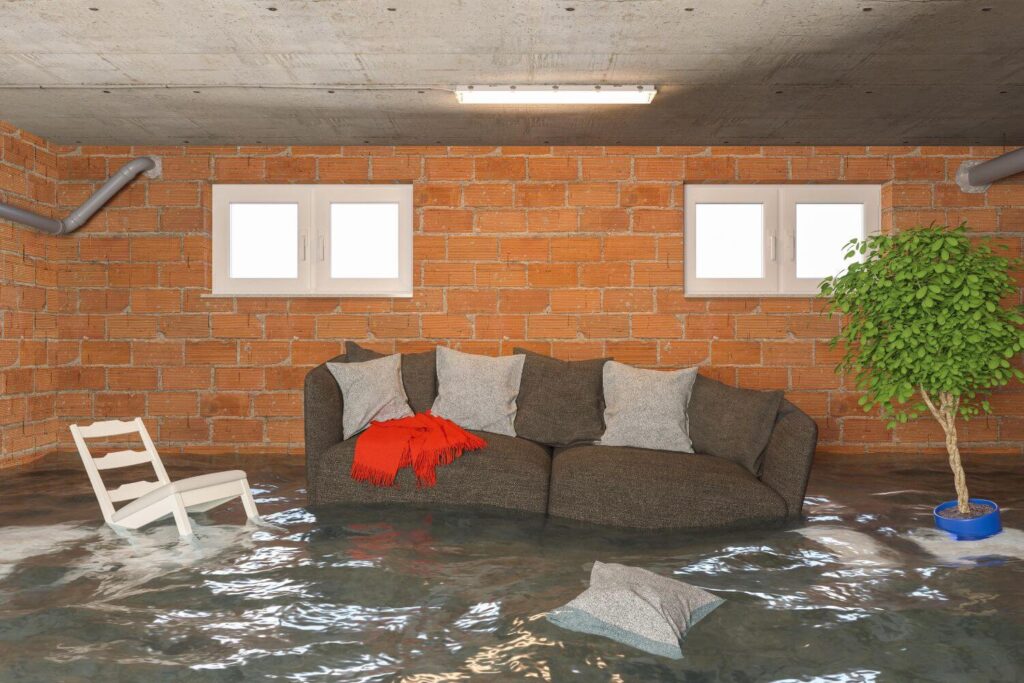Installing a drain tile system in your basement can help reduce the risk of flooding and protect your property. Basement drain tiles help collect water for easier transportation out and away from your home, returning it to natural drainage sources that can handle more volume than your soil can. These active drainage systems are often installed by your local experienced foundation specialists as part of a comprehensive waterproofing strategy.
The Dangers of Basement Flooding

Flooded basements are not fun, but the danger goes beyond a simple inconvenience. Water leaking into your basement can damage the structures of your home, appliances, and personal property. They also create a welcoming environment for pests by providing plenty of water and food sources. Wet basements are also the perfect breeding grounds for mold and mildew, which can lead to even more property damage and medical complications. Using a drain tile system to manage basement moisture helps prevent the dangerous accumulation of water that leads to these complications.
What is a Drain Tile System
Drain tile systems consist of perforated pipes laid below ground level in a trench lined with gravel. Water seeps out of the soil through the perforations in the pipe. The water accumulates in a collection pit called the sump before an electric sump pump powers it up and out of the house’s basement walls.
Drain Tile Systems Vs. French Drains
At first glance, these two waterproofing systems are very similar. In fact, many people use the terms interchangeably to mean any drain system that uses a perforated pipe to collect water. However, there is a very important distinction. They are laid at different depths.
French Drains are installed in shallow trenches dug around ½ feet to a foot under the surface of your land. Surface water is collected before it can pool or oversaturate the ground and then moved toward natural drainage outlets. This helps waterproof your foundation by limiting the water that enters the soil surrounding it.
Drain tile systems are installed deeper, often 8-10 feet underground. This gives the pipes direct access to ground water saturating the soil, making installation near your foundation walls perfect. There, they can leech water out of the soil directly pushing against your foundation, protecting it from the added weight of the water and reducing the hydrostatic pressures it faces.
Which System is Right For Your Property
Every property faces its own unique set of risks. The decision will often come down to whether the drainage issue is near the surface, in which case, French drains may be the most effective option, or with the soil’s inability to properly channel and drain the water it’s collected at a deeper level. In the latter case, drain tile systems around the footing and base of your foundation’s exterior can serve as a last line of defense. Adding French drains inside the basement may also be considered. Allowing basement drain tiles to feed water directly to the sump, whether it’s from seepage, condensation, leaks, or another source.
Get a Professional Involved
Installing a drain tile system is usually beyond the skill or equipment capabilities of DIY foundation waterproofing. The perforated pipes are laid deep below the surface near the footings of your foundation. They also need to be at an appropriate slope to move water along to the sump or natural drainage; otherwise, water could become trapped, stagnate, and back up. Proper underground connections will need to be made to your existing drainage system, or a new drainage pipe may need to be laid to reach natural or manmade drainage areas with enough capacity to accept your property’s excess moisture.
The Drain Tile System Installation Process

- Call For Your Free Inspection – One of our foundation specialists will make an appointment to visit your property, inspect your foundation and yard, and then tailor a plan that fits your home’s needs. We’ll make sure you know which options give you the best chance of success, whether it’s a drain tile system, French drains, or another basement waterproofing strategy.
- Preparation – Once you decide to move forward, we’ll schedule your foundation services, get any necessary permits, and ensure we’re ready to go. Our goal is to minimize the disruption to your home routine while we’re protecting your property.
- Excavation – Trenches for the drain tile system will be excavated next to the property so the pipe can be placed as close to the foundation’s base as possible. This gives it the best positioning to capture excess moisture and protect your home.
- Installation – The gravel substrate, perforated pipes, and any supporting drainage structures will be placed and leveled to ensure water can move freely away from your home. The work will be checked, and any final adjustments will be made before proceeding.
- Backfill – The trenches are filled in with soil and substrate to create an even, properly sloped yard so that surface water is channeled away from the foundation. Sod will be laid or new grass seed planted to get your yard looking beautiful as quickly as possible.
- Repairs and Interior Waterproofing – Once the source of water infiltration is cut off, we can get to work repairing any damage to your property and ensuring you have the comprehensive protection you need for peace of mind.
Get Your Free Quote Today
Put Western Pennsylvania’s foundation experts to work for you. Schedule your no-cost, no-obligation home inspection and get a written quote that shows you how cost-effective protecting your home can be. Contact A.M. Wall Anchor & Waterproofing for a basement drain tile system estimate today.

